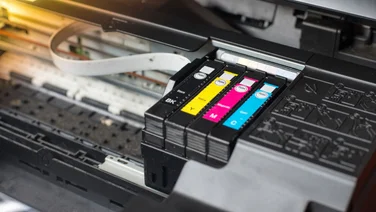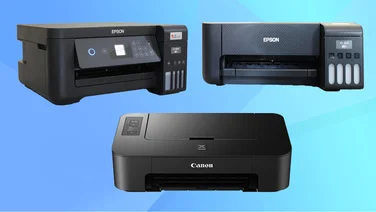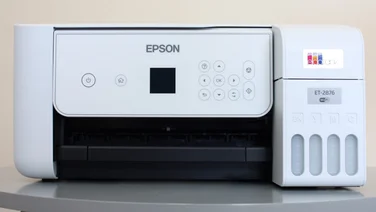To help us provide you with free impartial advice, we may earn a commission if you buy through links on our site. Learn more


HP’s Envy sub-brand is applied to its premium models, which are distinguished by their slick styling. This inkjet multifunction peripheral (MFP) is a striking mix of glossy black plastic and brushed metal alloy. Like several Epson MFPs including the Epson Stylus Photo PX720WD, the Envy 100 looks like a high-end VHS recorder from the early 90s. There’s no obvious gap for printed paper to emerge, while the paper cassette is slotted into the base and is only big enough for 80 sheets.

Plug the Envy 100 in and the only obvious control is a power symbol illuminated on the front panel. Touch this and the panel lights up with an 8.9cm colour touchscreen surrounded by illuminated, context-sensitive buttons. The whole assembly can be tilted up to a comfortable angle.
HP’s interface is like a smartphone’s, combining touch-activated icons and a list of applications that can be scrolled with a gesture. Unfortunately scrolling wasn’t smooth, while audio feedback arrived up to a second after the button press it related to, leading to confusion and repeated presses. There are several sub-menus, which took between four and nearly 10 seconds to load, adding to the overall feeling of unresponsiveness. The system includes downloadable apps and clever features such as preview views of photocopies, but its sluggishness made it tedious to use.

The Envy 100’s print driver splits options between two tabs: Layout and Paper/Quality. Although it’s easy to select most everyday print options, some are hidden away in a separate Advanced page. We wouldn’t normally expect to delve into advanced options to select borderless photo printing, for example.
Motors swivel the control panel up and a paper stop into place for printing, from where they return when you collect the finished job. This adds a short delay to the start of a job, but the Envy 100 was quick to produce draft text, reaching nearly 15 pages per minute (ppm). It wasn’t as rapid at normal quality, however, managing only 5.4ppm in black and 1.9ppm in colour, while photos were very slow and wouldn’t print without borders. Other than this, we were quite happy with the results. Text and graphics looked crisp and solid on plain paper, while photos were free of banding or any visible grain.
While the Envy 100’s scanner is a little slow to create previews, you don’t need to scan again for resolutions of up to 300dpi. The driver does need to rescan above this, though, with 1,200dpi being particularly slow. The interface has no auto-exposure or automatic marquee selection, making it less easy to use than some. Scans are disappointing, too, with automatic sharpening leaving obvious artefacts.
While the Envy 100 looks clever, its control panel and motorised paper stop seem over-complicated gimmicks. By contrast, the print and scan drivers seem simple, but their omission of some basic features leaves them verging on simplistic. Epson’s PX720WD is better and cheaper.






